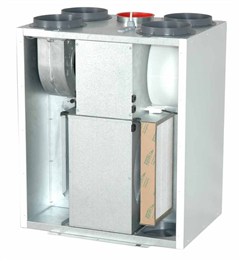I started reading intensively about 3d-printing in March this year and I was surprised about how far this field had gotten since last time I checked (it was in 2007). In fact, I was very impressed about the quality of the printed parts mere hobbyists got. Hence, it did not take me long before I ordered a kit.
I decided to build a small printer as my first printer, and considered both the new
Printrbot jr and the
Reprappro Huxley. The Printrbot both looks better and is probably easier to build, being built from lazercut plywood rather than treaded rods. It is also cheaper. Nevertheless, I ordered a Huxley.
 |
| Reprappro Huxley (image from Reprappro) |
The Huxley arrived after about a week and I have nothing but good things to say about the kit and the service minded folks at Reprappro. Every bag of parts is clearly marked, and with the assembly instructions on the
wiki it is a joy to put together. Look
here for a unboxing video by mr Mike H.
In short, I had no problems at all putting the printer together. The entire process was easy and straightforward and I can highly recommend the kit from
Reprappro. Well, actually, there was one problem: The Y-axis belt tensioner is a poor design and it is very difficult to adjust the tension on the belt using the set-screw. Fortunately there are better designs on
thingiverse and I will switch to this design whenever I have to remove the bed. In the meantime, I invented my own quick-fix by using a M6 bolt as a belt tensioner beneath the bed.
 |
| Using a M6 bolt as a belt tensioner for the Y-axis |
The only major problem that occurred before my first print was to get the software working. As I am running a rather old version of Mac OS (10.5). I had problems with the latest versions of
Pronterface and
Slic3r. In order to make this combo work with the printer, I had to install Ubuntu Linux on my mac. Thanks to
this guide, I managed to make dual-boot work after some struggle. In total, I think I ended up spending more time on the software than on actually building the printer. Building the printer was also way more fun.
They say that the first things you will print with your new 3D-printer
are modifications for the printer. For me, this was proven to be true. I started straight away to modify the printer. First, I added a fan to cool small parts while printing. It seems to be a handy add-on that most Reprappers recommend. The fan is suppported in Slic3r, which produces the G-codes to start and stop the fan automatically when needed. I created a fan mount for the X-axis in
OpenSCAD. It seems to work very well and small parts now prints a bit better. Although others have created better designs than my primitive fan mount solution, such as
this one, I think I will stick to my design for a while.
 |
| A bracket for mounting a fan on the X-axis |
The other modification I have done is to control the hot-end-fan via firmware. The reason for this is that my extruder fan (which is connected to +19V constantly) is very noisy, and the fan is not needed unless the hot end heater block is on. The noise from the fan can be very annoying during e.g., calibration or when performing other hacks. I added some code lines to the Marlin firmware to make the fan switch on when the hot end temperature is above 50 degrees C. I found the necessary code lines for the Marlin firmware
here, and pasted them into my own firmware. On the Huxley, the mosfet-output for the heated bed is not used, so I altered the firmware to use this output to control the hot-end fan. Now, the printer is very silent when it is not printing.
 |
| The hot-end fan is connected to the unused heated-bed output and is controlled by Marlin |
The third modification I have done is to add a LCD and a rotary encoder. I could have just ordered the nice
Panelolu 2, but I decided to go cheapskate and ordered a
16x4 I2C LCD and a
rotary encoder from
dx.com. The display uses the PCA8574 I2C I/O Expander. I spent some hours hacking the firmware, but I finally got it up and running. To make it work, I had to scrap the reprappro version of Marlin in favor of the t3dp3d Marlin version. I used the excellent guilde at
Think3dPrint3d to make the display work.
 |
| My four-line display attached in a bad printed Panelou 2-case. |
It is very handy to be able to control the printer without a computer attached. I printed the
Panelolu case from Think3dPrint3d. The print did not come out well, but I will use it until I have designed a casing that is more suitable for the Huxley. For now it is mounted with zip-ties on one of the z-axis motors.
 |
| This is how my Reprap Huxley looks today. | | | |
|
|
Thats it for now. I am happy to be a part of the Reprap community, and I will hopefully print a lot of useful stuff in the future. Even if the parts that are printed sometimes come out as crap, it is still very intriguing to watch the printer produce 3d-objects.


.JPG)
.JPG)
.JPG)
.JPG)




.JPG)


.JPG)










